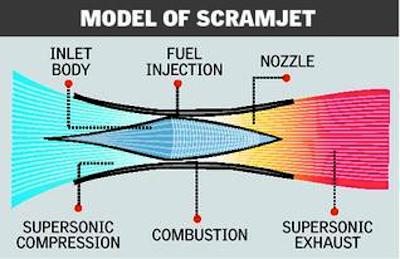.

Having tasted success with the indigenous development of a cryogenic engine for launch vehicles, the Indian Space Research Organisation (ISRO) is now turning its attention to another key technology for space travel.
Engineers at ISRO are gearing up to test the scramjet engine developed in-house to power the Reusable Launch Vehicle (RLV) due to undergo the first experimental flight shortly.
The scramjet engine which uses air breathing propulsion technology for hypersonic flight is scheduled to be test flown in January or February, VSSC Director K. Sivan said here on Friday. Talking to the media on the sidelines of the National Aerospace Manufacturing Seminar (NAMS- 2015) organised by the Society of Aerospace Manufacturing Engineers, he said the scramjet engine would be strapped to a two-stage Rohini sounding rocket for the experimental flight lasting seven seconds. It will be released at a height of 70 km and ignited during the coasting phase.
Smaller launch vehicles
Space research organisations across the world are involved in the development of scramjet technology because it contributes to smaller launch vehicles with more payload capacity and promises cheaper access to outer space. While conventional rocket engines need to carry both fuel and oxidiser on board for combustion to produce thrust, scramjets obtain oxygen from the atmosphere by compressing the incoming air before combustion at supersonic speed.
Almost 80 per cent of the lift-off mass of a launch vehicle is due to the oxidiser, explains Dr.Sivan. “By obviating the need to carry oxygen, the lift-off mass is considerably reduced, thereby enhancing the payload capacity. The scramjet engine can also liquefy the oxygen and store it on board.”
However, maintaining combustion in supersonic conditions poses technical challenges because the fuel has to be ignited within milliseconds.
Dr. Sivan said the scramjet engine would be married to the indigenously developed RLV at a later stage.
Meanwhile, ISRO is preparing for the first experimental flight of the RLV-TD (Technology Demonstrator). The vehicle is undergoing flight integration at the VSSC before being moved to Bengaluru for acoustic testing and later to Sriharikotta for the launch expected to take place in January.
Quelle: The Hindu
4211 Views
